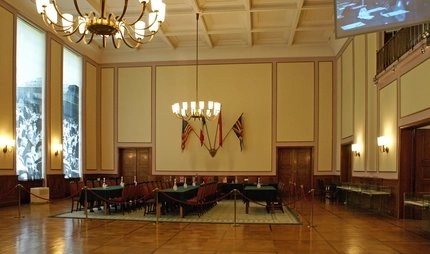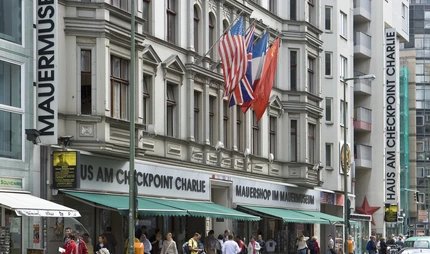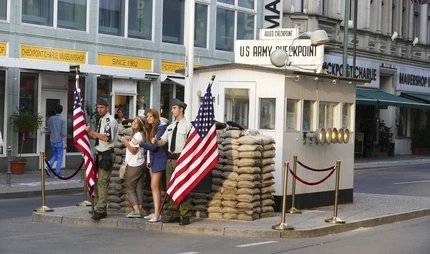
Anti-War-Museum
A plea against violence
Speaking out against violence and war, the Anti-War Museum is established in Berlin at the beginning of the 1920s. The National Socialists close the establishment in 1933. A second attempt to revive the project fails during the war, with the Anti-War Museum (then in Brussels) burned down during the German Western campaign. Almost 40 years later, the Anti-War Museum is re-established. This time it remains: as a plea against war, revealing to you old air-raid shelters, war toys, meaningful photos and documents. It reveals war's tragic history.
Small exhibition with important exhibits
The idea for an anti-war museum in Berlin came from Ernst Friedrich, from Wrocław. In 1925, he founds it at Alexanderplatz in Berlin. Tragically, the National Socialists close it and arrest Friedrich for a time. A place that stands against violence, suffers violence. The SA turn it into a torture chamber, a so-called "storm restaurant." Friedrich's grandson Tommy Spree re-opens the Anti-War Museum in Berlin in 1982. It is a small museum in a classic Berlin building, typical of the former working-class district, Wedding. Many exhibits are deliberately oppressive: soldiers' helmets, warfare agents and gas masks fill the display cabinets. The air-raid shelter looks realistic, with a rusty bed frame made during war days. Inscriptions on a historic bunk door from the borough of Neukölln testify to the hours that people spent here during the bomb attacks. To keep calm, a woman writes on the metal the date and time of almost every air-raid alarm. The Second World War is not the only focus – the Anti-War Museum displays photographs of casualties from the First World War, to emphasise the horror. A world map indicates all current war zones. The art displayed in the Anti-War Museum is also a protest against violence: photographs, writings and paintings are characterized by their abstract as well as direct appeals for pacifism. Artists include Karl Kraus, Evelyn Sion and Kurt Tucholsky.
Features of the Anti-War Museum:
- original bomb shelter in the basement
- bunker door from Neukölln with dates and times of each air raid
- peace sculpture "The Broken Rifle", in front of the museum
- Peace Gallery with anti-war art (changing)
- war toys from the 20th century
War and holocaust memorials in Berlin
In the heart of Berlin you will find the Memorial to the Murdered Jews of Europe. Resistance fighters and victims of the Second World War are commemorated on a memorial stone in the Dorotheenstadt Cemetery. The plain and simple monument includes the names of several notable figures. Another memorial site stands today at the former Plötzensee prison: the National Socialist regime formerly locks up and executes its political opponents here. The site reminds us, for example, of those involved in the Hitler assassination attempt of July 20, 1944. Murellenberg commemorates the victims of the NS-Justiz. In 1945, more than 200 soldiers are killed, accused of desertion. 106 traffic mirrors serve as memorial markers, some bearing inscriptions by the artist Patricia Pisani. The German-Russian Museum, on the other hand, can be found in the place where German military power capitulates on May 8, 1945. The gallery CHAUSSEE 36 is situated in a former Prussian officer's house and exhibits photography. There is also a restored air-raid shelter.
Tips for your visit to the Anti-War Museum
Take the U6 underground line to Seestraße station or the U9 to Leopoldplatz. From there it is only a 15-minute walk to the Anti-War Museum. Alternatively, take bus lines 106 and 221 to Antwerpener Straße or to the stop Seestraße/Amrumer Straße. You can park your car at the B+B car park on Müllerstraße. Entry to the museum is free of charge and it is also open on Mondays.
Opening hours
| Monday | |
|---|---|
| Tuesday | |
| Wednesday | |
| Thursday | |
| Friday | |
| Saturday | |
| Sunday |



